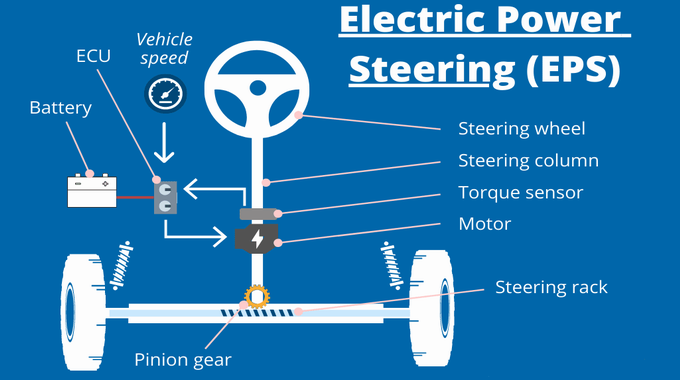NTC (Negative Temperature Coefficient) thermistor temperature sensors play a critical role in automotive power steering systems, primarily for temperature monitoring and ensuring system safety. Below is a detailed analysis of their functions and working principles:
I. Functions of NTC Thermistors
- Overheat Protection
- Motor Temperature Monitoring: In Electric Power Steering (EPS) systems, prolonged motor operation may lead to overheating due to overload or environmental factors. The NTC sensor monitors motor temperature in real time. If the temperature exceeds a safe threshold, the system limits power output or triggers protective measures to prevent motor damage.
- Hydraulic Fluid Temperature Monitoring: In Electro-Hydraulic Power Steering (EHPS) systems, elevated hydraulic fluid temperature reduces viscosity, degrading steering assistance. The NTC sensor ensures fluid stays within the operational range, preventing seal degradation or leaks.
- System Performance Optimization
- Low-Temperature Compensation: At low temperatures, increased hydraulic fluid viscosity may reduce steering assist. The NTC sensor provides temperature data, enabling the system to adjust assistance characteristics (e.g., increasing motor current or adjusting hydraulic valve openings) for consistent steering feel.
- Dynamic Control: Real-time temperature data optimizes control algorithms to enhance energy efficiency and response speed.
- Fault Diagnosis and Safety Redundancy
- Detects sensor faults (e.g., open/short circuits), triggers error codes, and activates fail-safe modes to maintain basic steering functionality.
II. Working Principle of NTC Thermistors
- Temperature-Resistance Relationship
The resistance of an NTC thermistor decreases exponentially with rising temperature, following the formula:
RT=R0⋅eB(T1−T01)
Where RT = resistance at temperature T, R0 = nominal resistance at reference temperature T0 (e.g., 25°C), and B = material constant.
- Signal Conversion and Processing
- Voltage Divider Circuit: The NTC is integrated into a voltage divider circuit with a fixed resistor. Temperature-induced resistance changes alter the voltage at the divider node.
- AD Conversion and Calculation: The ECU converts the voltage signal to temperature using lookup tables or the Steinhart-Hart equation:
T1=A+Bln(R)+C(ln(R))3
- Threshold Activation: The ECU triggers protective actions (e.g., power reduction) based on preset thresholds (e.g., 120°C for motors, 80°C for hydraulic fluid).
- Environmental Adaptability
III. Typical Applications
- EPS Motor Winding Temperature Monitoring
- Embedded in motor stators to directly detect winding temperature, preventing insulation failure.
- Hydraulic Fluid Circuit Temperature Monitoring
- Installed in fluid circulation paths to guide control valve adjustments.
- ECU Heat Dissipation Monitoring
- Monitors ECU internal temperature to prevent electronic component degradation.
IV. Technical Challenges and Solutions
- Nonlinearity Compensation: High-precision calibration or piecewise linearization improves temperature calculation accuracy.
- Response Time Optimization: Small-form-factor NTCs reduce thermal response time (e.g., <10 seconds).
- Long-Term Stability: Automotive-grade NTCs (e.g., AEC-Q200 certified) ensure reliability across wide temperatures (-40°C to 150°C).
Summary
NTC thermistors in automotive power steering systems enable real-time temperature monitoring for overheat protection, performance optimization, and fault diagnosis. Their core principle leverages temperature-dependent resistance changes, combined with circuit design and control algorithms, to ensure safe and efficient operation. As autonomous driving evolves, temperature data will further support predictive maintenance and advanced system integration.
Post time: Mar-21-2025


